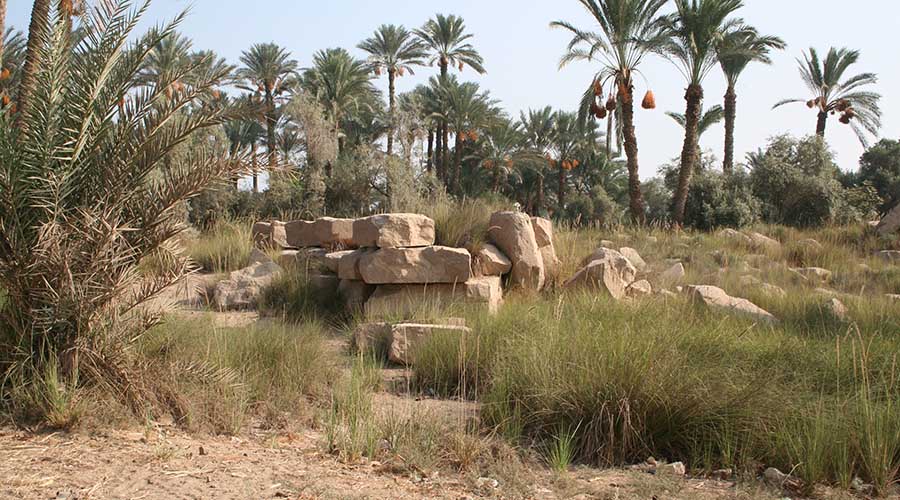Biahmu Fayoum Egypt tours, booking, prices, reviews
Biahmu Fayoum in Egypt is 7 km north of the capital of the vast Oasis of Fayoum. In fact, Biahmu is the the site for the famous pedestal itself. Indeed it is not near a road today. To get there, you should walk through the thick vegetation. You also should do through shaded areas and span many irrigation ditches. The remains of two large stone pedestals once supported colossi of Amenemhat III. They stand just north of the small village of Biahmu. In fact, the two large pedestals are somewhat ruinous, but essentially complete stone. Moreover, they are light yellow in color. They now partly supported by Department of Antiquities bricks. In fact, the walking to al-Sanam village is pleasant.
The fresh, soft and sandy color of the pedestals stand about 100 meters apart. It presents an attractive contrast to the rich green of the fertile surrounding countryside. How Much more striking the scene was thirty-eight centuries ago. In fact, each of the pedestals surmounted by a majestic red quartzite. It seats the colossus of Amenemhat III. The Pedestals maybe stood about the same height as they do now. In fact, it is about 8 meters and the colossi towered a further 13 meters. Each Colossus and pedestal surmounted by an enclosure wall. The wall is of the same solid blocks as the pedestals.
Further details about Biahmu Fayoum:
In the thirteenth century AC, Nabulsi saw the two colossi almost intact. One faced West and the other faced the East. In fact, the persistent rumors of hidden treasure led to the removal of their tops. The colossi however, solid and yielded nothing but their dignity. In 1888, Professor Petrie removed many fragments. He passed them on to the Ashmolean Museum in Oxford which now holds forty-seven pieces. The best preserved is the nose of one colossus. It is on display in the museum’s Egyptian Sculpture Gallery. Other fragments apparently left in site by Petrie.
In fact, these disappeared, and now no trace of the colossi remains at al Sanam. The purpose of the colossi not agreed upon. It is unusual in Egypt to find statuary so completely isolated. That is why they explained as markers of a harbor on the ancient lake Moeris. They marked as a special monument to the great achievement of Amenemhat III in the province. Moreover, they somehow related to the main temple of Sobek at Kiman Faris, 6 kilometers away. Christopher Kirby carried out new studies on the site in the 1990. He believes that the enclosure walls represent open-court and solar temple. In fact, the polished quartzite statue of the pharaoh would shine brilliantly in the sun














